Which are the best air rifles for shooting rabbits?
Air rifles: I was rabbiting recently with a .177 air rifle, but I couldn’t hit anything. Is this calibre powerful…
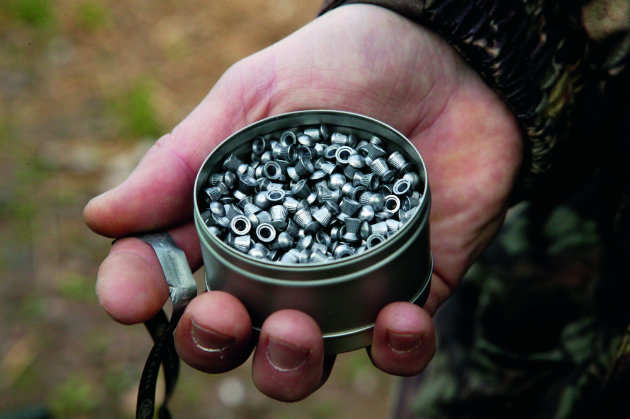
Frustrated by your performance with an air rifle? Wondering how to improve things? Well, washing airgun pellets could be a start. As could lubricating, sizing and sorting air rifle pellets. (Read our list of the best airgun pellets to buy online here.)
Any small changes you make to a pellet can make a difference to its accuracy and trajectory down range, due to the low velocity of air rifles compared with rimfires.
I regularly use four simple and relatively quick procedures. If you follow them regularly, they will soon become second nature and you will find them easy to perform.
Keep your ammunition clean and it will perform better. Tarnished, fouled or contaminated air rifle pellets will not shoot the same as pristine pellets, so a pre-clean before use is beneficial.
Most airgun pellets come in tins and if you tip the pellets out on to a white sheet of paper you will see quite a lot of swarf and small lead fragments. These can cling to the pellets and if they are located on a pellet’s head circumference or skirt, where the air seal is in the barrel, this can cause air leaks and inconsistent accuracy.
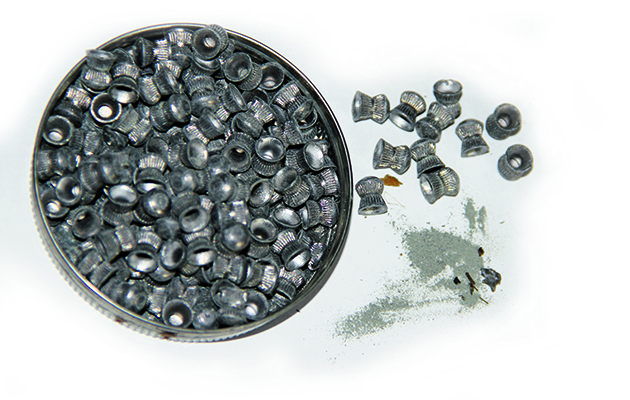
Washing pellets before using will remove debris.
1. Tip out the pellets, removing any bits clinging to the pellets themselves. Place a small amount — say 200 .22 calibre or 300 .177 calibre — into a freezer bag and add 50ml of warm water and two drops of washing-up liquid.
2. Shake them gently for five minutes, then tip them out on to some absorbent cloth.
3. Allow them to air dry, or use a hairdryer. The pellets should now be clear of filings and debris.
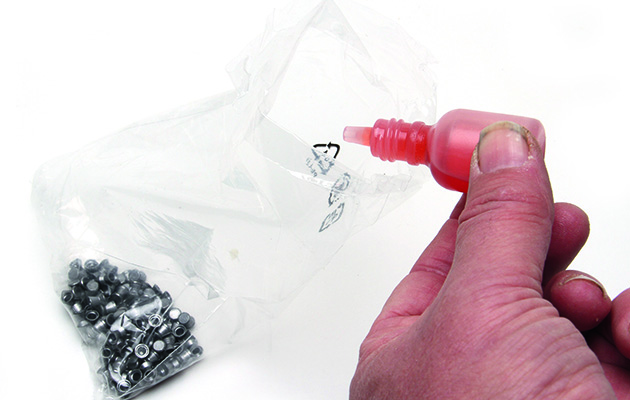
Air rifle pellet lube will boost performance
After washing your airgun pellets as described above you should lubricate them to stop them oxidising (unless you plan to use them immediately). Oxidation on the surface of the pellets will increase the friction between the pellet and the rifling in the bore, so the passage of the pellet down the bore ‘judders’. You don’t want that to happen.
We have all had annoying fliers in airgun groups. Lubrication can improve the consistency of shot-to-shot velocity and accuracy and reduce fouling in the barrel, which keeps the airgun’s accuracy for longer and helps eliminate point-of-impact shift.
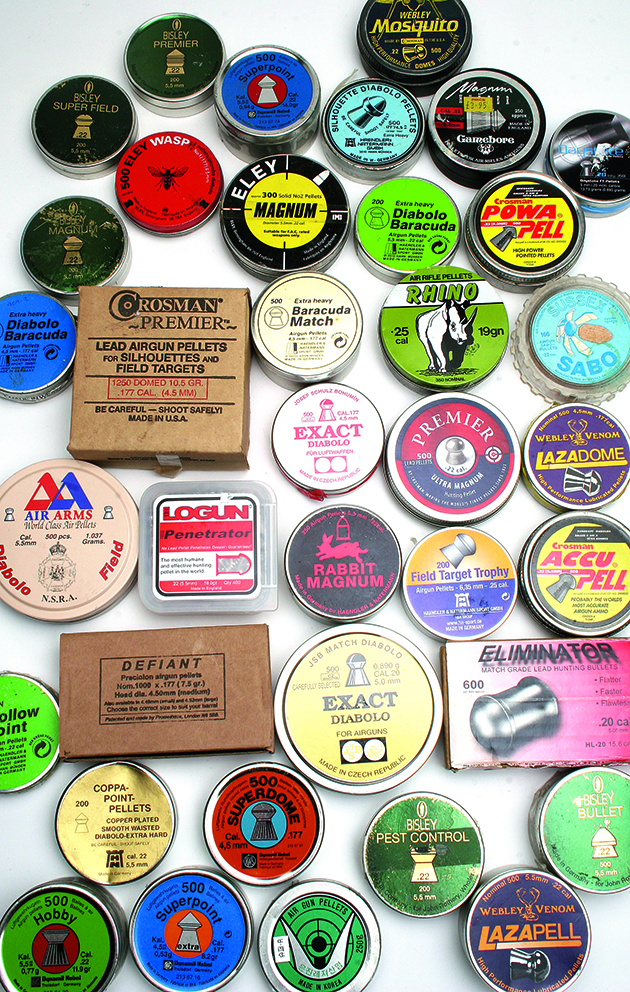
Pellet types are extremely varied but all can benefit from a little tweak to improve accuracy.
Use the same method as for washing the airgun pellets but this time add a small amount of lubricant. There are many pellet lubricants on the market. I use two types: Napier and Daystate. The Napier comes as a liquid and a spray while the Daystate is spray only. Two drops of lubricant is all you need but because a .177 has a different surface area from a .20, .22 or .25 pellet you will need to experiment a bit to get it right.
Napier also suggests adding a few drops to a tin of pellets and agitating them. I tested some differing styles of .177 and .22 pellets — here are the results.
This is very easy and takes little time. You just need a cheap pair of scales, either digital or balance beam as used for reloading cartridges.
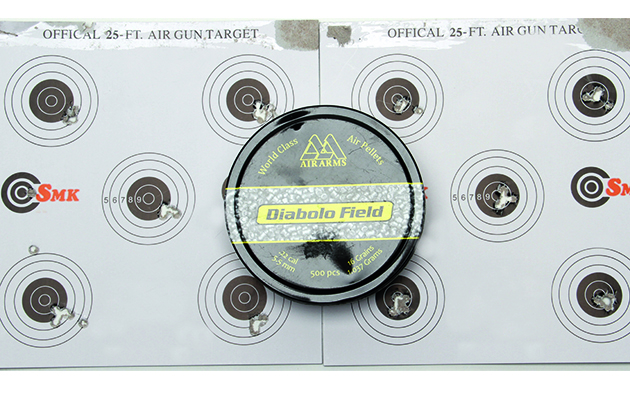
In shot grouping tests, the .22 AA Diabolo Field pellets that had been lubricated according to Bruce’s instructions showed an improvement in accuracy
Each pellet and calibre of pellet will have an average weight measured in grains. The idea is to weigh each pellet and reject those that are “outliers” and fall outside the limits of the mean weight. If say a .177 pellet weighs 8.6-gr, a plus or minus weight of 0.2-gr will not make much difference to velocity or accuracy. You are looking to reject the 0.5-gr-plus oddities.
As the test results show (see below), there was good accuracy all round, but there was an increase in group size when using non- identical weights. At 25 yards, you might not really notice it, but at 30-40 yards this could be the difference between a hit or a miss.
Sizing air rifle pellets can be a useful way to improve accuracy in your air rifle and you do not necessarily need specialised tools. What you are trying to achieve is a perfect pellet, whose head and skirt dimensions are symmetrical and uniform. They should also match the groove diameter of the barrel.
Air rifles: I was rabbiting recently with a .177 air rifle, but I couldn’t hit anything. Is this calibre powerful…
You can save a wad of your hard-earned cash by buying a second-hand air rifle. But if you don’t know…
Lead pellets are usually soft, so they can deform easily and re-uniforming each one can prove beneficial to consistent velocities and accuracy. So there are two benefits to sizing a pellet — matching the barrel’s internals and ensuring the bearing surfaces are uniform for a better fit.
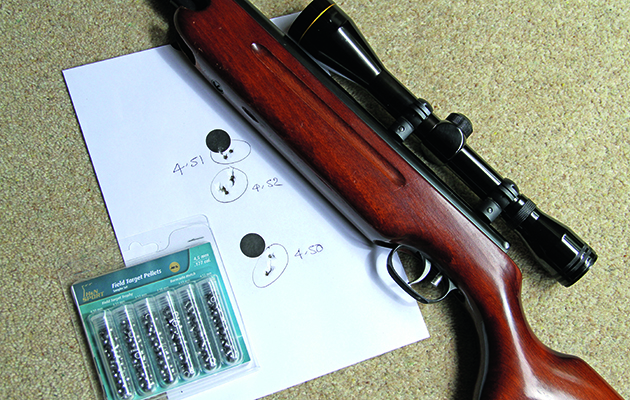
H&N’s FFT pellets come in several head sizes
Use pellets that are available in different head sizes to match your rifle’s barrel. In this way you can try each different head size for the same style of pellet that best matches your barrel’s characteristics. For instance, in .177 calibre, H&N makes its Field Target Trophy (FTT) pellet, a domed-style pellet ideal for targets or hunting, in many head sizes. The metric size is 4.5mm and this pellet is offered in 4.50mm, 4.51mm and 4.52mm.
The results suggest that this particular HW35 liked the 4.51mm FTT pellet size, as the velocity was highest, so energy and accuracy was consistently better than the other two sizes. These pellet sizes can be bought in packs of 40 for each head size, so you can experiment at home.
The other sizing option is to actually size your own pellets to match your barrel by using a pellet sizer. Here, a pellet is swaged through the die so as not to deform it but to yield a uniform and true pellet specific to the diameter you want. This way you now know that each pellet is identical and if you miss, it’s down to you.
This method is handy for .20-calibre pellets, where expanding the skirt can be beneficial, as the skirts in this large calibre are often dented or deformed.
As you can see in this case, with swaged pellets, the velocity reduced slightly but accuracy increased. However, given that a wide range of pellet weights and styles is available, it really is a matter of trial and error. However, when you do hit that sweet spot the end result can be very satisfying.
Of course, you could just put pellets from the tin straight into your pocket before you go out rabbiting. But spend time washing, weighting and prepping your pellets and you know that you’re unlikely to miss because of a duff air rifle pellet.
HIKMICRO has elevated its proud commitment to airgunners to a new level with the launch of the ALPEX 4K Lite on May 22nd. This groundbreaking digital scope has been developed in response to the airgun...